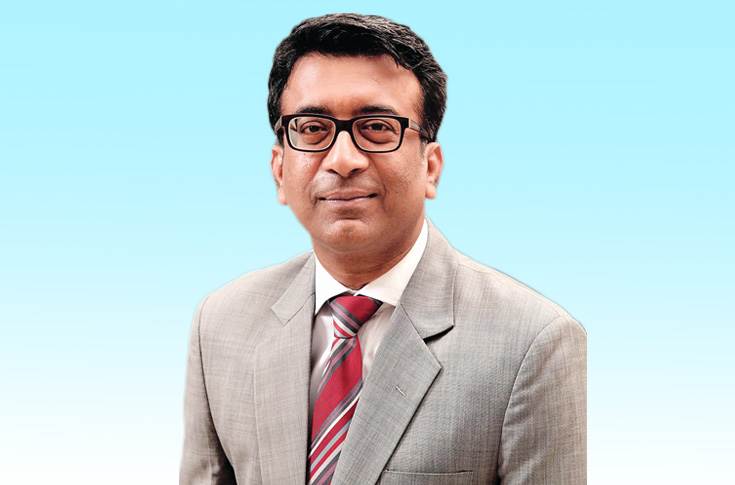Manish Raj Singhania, President of the Federation of Automotive Dealers Association (FADA), the apex lobbying body for retail owners, appears to be bullish on vehicle sales during the current festive season, predicting that they will increase by more than 40 percent due to the festive season compared to a low base in FY22, thereby breaching the pre-Covid19 levels. He emphasised that, despite significant volume increases in almost every vehicle segment led by SUVs, two-wheeler sales, particularly at the lower end of the segment, remain a source of concern.
Excerpts from the interview:
How has the festive season impacted various segments of the industry?
The overall festive season delivered much more robust growth than our expectations on a Year-on-Year (YoY) basis as compared to a similar period last year.
Navratri sales were good though we had a slow start in Onam. Sales in the Navratri period two-wheelers sales picked up along with the passenger car sales and passenger cars. While it was a given that the SUVs will perform exceedingly well, all segments including three-wheelers and tractors have also shown strong growth. In a nutshell, we can say the industry has grown by 40 percent on a YoY basis for the festival period which is a 42-day period from the onset of Navratri to Dhanteras.
In our estimates, the growth of two-wheelers is likely to be in the four or five percent range and very unlikely to breach the pre-Covid mark. What is your analysis?
You are right in your analysis there has been a turnaround in the two-wheeler sales, but sales are still far lower than pre-Covid levels and recovery on a YoY basis for the same festive period will be very much within single digits.
This is despite the healthy level of discounting between 10 to 12 percent offered by a slew of OEMs. It is still a tough game for the manufacturers as the rural Bharat market is still not responding well. The 2019 base of 20 lakh will be tough to breach for the two-wheeler makers.
That’s not all, Dhanteras fell on a Saturday, banks were closed, and this proved detrimental to the auto industry, especially for two-wheeler sales. At the premium end of the two-wheeler market, OEMs and luxury car makers are sailing in the same boat, facing similar issues of chip limitations reducing their manufacturing capabilities.
So, with the much-in-demand vehicle in short supply dealerships are saddled with the stock of models except for the popular ones as OEMs are still grappling with supply chain issues for procurement of semiconductors for high-end bikes, a similar issue as faced by passenger car makers.
The EVs, especially the two-wheelers, have had stellar growth. Did you see the EV sales gaining a similar momentum this festive season?
EVs have seen robust growth. While the market for EVs is pegged at around five percent of the total two-wheeler market, it is still dominated by newer brands that are yet to win the customer’s trust and confidence due to the EV fire issue. There has been a big improvement in the fast transition to EVs. The entry of legacy players like Hero Moto Corp, Bajaj and TVS with new entries will help consolidate their offerings in EVs will bring footfalls back to the dealerships and boost customer trust and confidence for them to make the shift to EVs.
There is a very strong demand for high-end luxury cars, but availability is becoming a sore point for growth in this category. Your comments?
Availability is a big issue in luxury cars, and we see this situation not changing much.
What is your view on passenger car sales beyond Diwali?
In passenger cars, the party is likely to continue from Diwali till the end of the year and I don’t see any demand stagnation taking place. Maruti had quoted 3.6 lakh pending bookings, Mahindra’s tally was at 2.5 lakh. This festive season would have seen the unloading of these bookings, but you cannot discount the new bookings that the much-in-demand models refilling the order books.
Some of the OEMs and products that will continue to keep consumers fancy are models Mahindra’s XUV 700 and Scorpio N, Maruti Suzuki Grand Vitara and Brezza for its strong hybrid USP, and KIA for its up-middle market resonance that has created a strong pull for the customers. The supply in the festive season will further help customers understand the product better, in turn generating new referral bookings which is good news for the passenger vehicle business.
The monsoon has played truant in many North Indian states. However, some states have seen decent monsoon. So how do you see the spread in terms of demand playing out?
So, as a country we are largely dependent on the monsoon, especially the agricultural sector, and that’s a very critical sector. The northern states have been hugely affected as the monsoon was not up to the mark and wherever it came, it came very late.
That was a big deterrent for the agricultural sector. We have states like Jharkhand, Uttar Pradesh, Uttarakhand and other similar North Indian states not giving proper numbers. They were de-growing even during Navratri. In fact, a unique thing that we saw during Navratri was Southern States were prospering and kicking numbers. Predominantly, Navratri retails happen in Northern India, but Southern States were really giving numbers at that time.
So, wherever there is a shortage or where the monsoon has not been good, the sales of two-wheeler and entry level cars will get affected. About 70 percent of two-wheelers come from the rural market. So, not having a good monsoon will further affect the already stressed numbers of two-wheelers and entry level cars.

